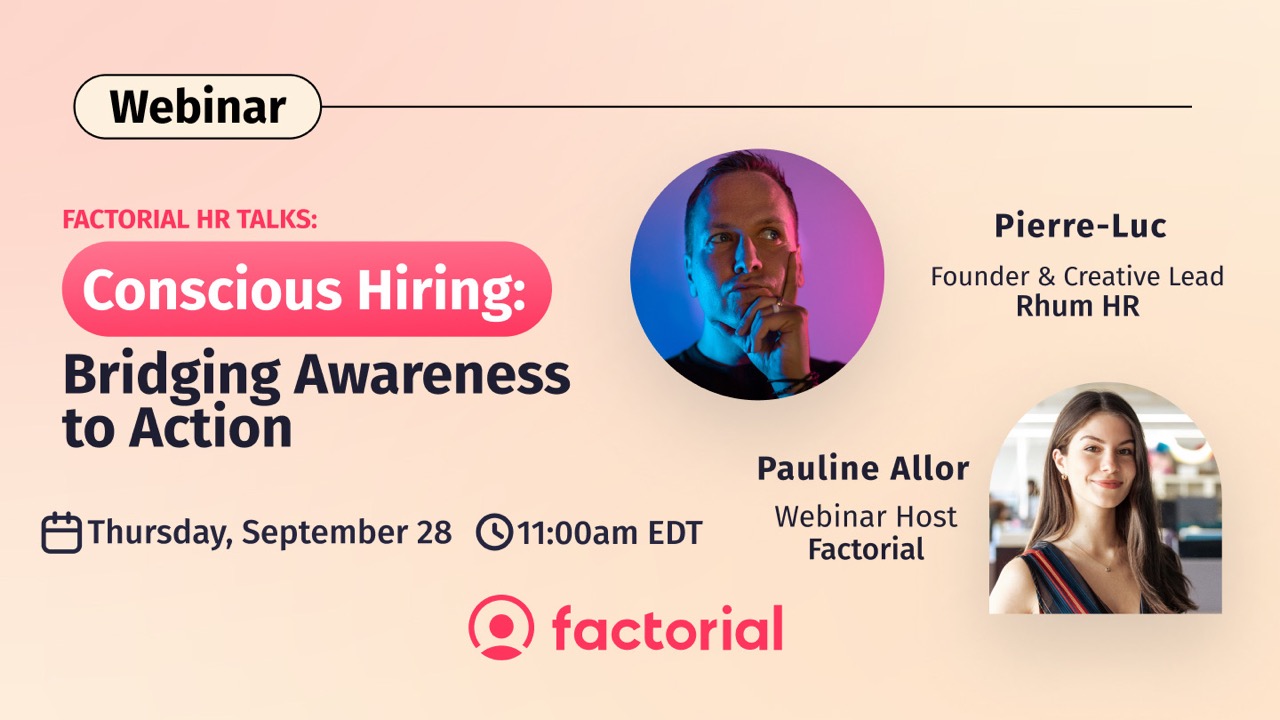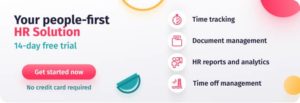The past few years have been very unstable for the business world. We have seen a global pandemic, war, and disruptions in energy supply chains. This has led to major shifts in the economy, high inflation rates, and rising costs. As a result, many businesses have had to tighten their belts and re-evaluate their strategies in order to continue operating. One strategy that many organizations are opting for is a hiring freeze.
But, what is a hiring freeze, exactly? And how can it benefit your business?
In today’s article, we are going to share everything you need to know about hiring freezes and why they can be a much more effective strategy than laying off your existing employees. We will also share 8 best practices for optimizing your internal processes while your hiring process is on hold.
What’s a hiring freeze?
There have been many stories in the news recently reporting on the layoffs being introduced by major players in the global business world. Companies including IBM, Google, and Microsoft have all announced significant redundancies, claiming a need to cut costs after overhiring in the last few years. Although layoffs can provide you with a short-term solution, downsizing your workforce is bound to have an impact on the long-term productivity and profitability of your business.
An alternative strategy that many companies are implementing is introducing a hiring freeze.
So, what’s a hiring freeze?
A hiring freeze is when a company temporarily pauses its hiring process and the creation of new roles within the business. This includes advertising openings, sourcing candidates, screening, interviewing, and hiring. The aim behind this strategy is to cut costs and keep the business operating during difficult times.
For example, a company might implement a short or long-term hiring freeze as a result of:
- Budgetary concerns if hiring costs could lead to overspending.
- Impending layoffs due to reduced cash flow. A hiring freeze can help you reduce costs, improve financial stability, and potentially avoid having to conduct layoffs.
- Economic downturn due to fluctuating market forces (recessions or depressions)
- National or global emergencies, such as the recent global pandemic.
These measures usually last between three to six months. However, this will ultimately depend on your business and your reasons for implementing a hiring freeze.
What can HR do during a hiring freeze?
Although it may seem drastic, a hiring freeze can actually be a great opportunity for you to re-evaluate and optimize the internal processes in your company. Instead of focusing on hiring new talent, you can work on strategies like learning and development, upskilling and reskilling, and improving your HR tech stack in order to enhance your employee experience and increase your retention levels.
A hiring freeze is also an excellent opportunity to conduct a job analysis audit and re-evaluate your talent acquisition strategy. That way, you will be ready to hit the ground running when your recruitment process restarts.
Plus, don’t forget that your employees will probably be feeling a bit uneasy if the freeze has occurred as a result of financial instability. They may also have to work longer hours and take on extra work until you’re able to recruit new employees. This means that it’s essential that you support your workforce and prioritize employee health and wellbeing. That way, you can maintain a happy and productive workforce during this difficult time.
With all these points in mind, let’s take a look at 8 best practices that you can implement during a hiring freeze.
Nurture your employer brand
Your employer brand is your company’s reputation as an employer from the perspective of past, present, and future employees. It reflects the value that you provide your workforce and what you can offer potential new recruits. Whether you have consciously created one or not, your employer brand exists.
When retention is high, it’s common for companies to neglect employer branding. This is because they feel that their workforce is complete, so developing their external employer brand isn’t a priority. However, as soon as a business lays off employees or implements a hiring freeze, it negatively impacts a company’s reputation as candidates feel nervous about the financial stability of the business.
That’s why it’s so important to nurture your employer brand when you freeze your hiring process. If you don’t, it will be very difficult to attract qualified candidates to your business once your hiring freeze has come to an end.
Here are a few strategies you can use to boost your employer brand:
- Make sure you have clearly defined mission, vision, ethics, culture, and values statements on your website.
- Design and implement a clear employer branding strategy that takes into account every touchpoint in the candidate and employee experience. Include specific goals for boosting your reputation.
- Create an appealing employee value proposition statement explaining what you have to offer potential candidates and post it on your website. Also, include it in your job descriptions once you start hiring again.
- Respond to Glassdoor reviews, gather testimonials, and keep active on your social media channels.
Maintain a strong candidate pipeline
Has your company ever advertised a job opening and received more applications than your hiring managers could handle? This can be very frustrating as you don’t have the time or resources to adequately screen and review every potential applicant. And who knows how many quality candidates might be slipping through your fingers and going to work for your competitors instead.
A hiring freeze is the perfect opportunity to get ahead of the game.
Take this time to build up your candidate pipeline. Review all those applications that you didn’t have time to look at before. Conduct searches on sites like LinkedIn. Build up a database of quality potential candidates that you can contact once you start hiring again, either manually or by using an applicant tracking system. This will save you a great deal of time in the long term and ensure you have a wide talent pool to cast your net into when the time comes.
It’s also important to maintain any candidate relationships that you started nurturing before your hiring freeze went into effect. Touch base with them. Explain that, although you aren’t hiring right now, you’d love to discuss a potential employment opportunity at a later date. Keep those communication channels open and keep your “on hold” candidates regularly updated.
Upgrade your HR tech
When was the last time you reviewed your HR tech stack?
Are the solutions you’re using effective? Does your Applicant Tracking System help you find quality candidates? Do you have access to all the features you need? What about data analytics? Can you access all your HR metrics whenever needed?
Use this time to conduct an audit of all your HR tools and platforms. If your tech solutions aren’t streamlining your processes, improving your candidate and employee experiences, centralizing your data, and reducing the workload of your HR team, then it might be time for an upgrade.
For example, with Factorial’s all-in-one HRIS, you get access to a hiring dashboard. A hiring dashboard is an intuitive space where you can organize all your hiring and recruitment metrics. You can use this dashboard to generate a range of reports related to the recruitment and selection process.
This includes your:
- Time to hire
- Cost per hire
- Time to fill
- Source of hire
- Offer acceptance rate
- Candidate satisfaction rate
- New hire attrition rate
Factorial’s solution also includes an Applicant Tracking System so that you can better manage your talent pool and optimize your hiring process. (More on this in the next section)
Ultimately, if you prepare now and make sure your team has access to the right tools and solutions, you will be ready to identify and recruit top candidates as soon as your hiring freeze is lifted.
Fine-tune your hiring process
Companies with effective recruitment and selection processes usually have lower turnover rates. This is because the better you are screening and evaluating candidates, the more likely they are to be a good fit for your organization. Not just in terms of skills and qualifications, but also in relation to character and personality. After all, if an employee isn’t able to blend into your culture and environment, then they will soon look for more suitable opportunities elsewhere.
Use your hiring freeze to your advantage and take the time to review and upgrade your hiring and recruitment process. Consider your screening and talent acquisition strategy and the methods you use for interviews. Break down your hiring lifecycle and make sure you are offering candidates a positive experience at each touchpoint.
Also, think about the technology you use to manage your hiring process. We mentioned using an Applicant Tracking System (ATS) in the last section. Do you use a reliable ATS? If not, are you aware of the benefits that you might be missing out on?
For instance, you can use Factorial’s Applicant Tracking System to:
- Create and track job postings.
- Identify and reach out to potential candidates and collect applications.
- Track applicants throughout each stage of the hiring process.
- Keep a close eye on all your hiring data, metrics, and analytics to identify any bottlenecks and stages in your hiring funnel that you need to improve.
- Create your own customized hiring page, showcasing your company, team, and available positions once you start hiring again.
- Effortlessly integrate new employees into Factorial’s onboarding software once hired.
Gather employee feedback
The experience that your employees have in your organization has a direct impact on your business. The better the experience that you offer at each touchpoint in the employee journey, the more likely you are to build a happy, engaged and productive workforce.
However, before you can improve your employee experience, you need to understand it. And the only way to truly do this is by collecting regular employee feedback.
There are a few methods you can use to collect employee feedback. You can hold regular check-ins, conduct exit interviews, and use a suggestion box. You can also share regular employee surveys to keep your finger on the pulse. And because your recruiters won’t be busy with hiring right now, they will have more time to create and share these surveys and analyze the feedback they collect from your staff. You can then implement the necessary changes to improve your employee experience and create an environment where your workforce can thrive.
Perform a job analysis
A hiring freeze is also an excellent opportunity to conduct a job analysis to review your current roles and job descriptions.
A job analysis is an in-depth audit of the hierarchy of your organization. When you conduct this type of analysis, you break down every position in your company and establish what skills and experience each position requires and what the specific roles and responsibilities are. You should also identify what the working conditions are for each role, and how each position impacts the rest of the organization. However, make sure you evaluate the position, not the person currently performing the job.
There are a number of benefits to conducting a job analysis. It can help you identify organizational inefficiencies, skills gaps, and opportunities for upskilling and reskilling. Plus, by defining all your positions now, it will be much easier and quicker to create job descriptions when you start hiring again.
Identify L&D opportunities
As you won’t be hiring for a while, it’s vital that you take good care of your existing employees so that they don’t hand in their notice and leave you understaffed. And a big part of this is showing your employees that you have designed a clear progression plan for them consisting of specific learning and development opportunities.
Once you have conducted a job analysis, you should have a clearer idea of where there are skill gaps that you need to address. You should also have valuable feedback on where there is potential for upskilling and reskilling. Use all this data to create a learning and development program and involve all your employees. The more you nurture your employees with strong talent development strategies, the more you will gain as an organization, especially during a hiring freeze.
Prioritize employee wellbeing during your hiring freeze
We are living in an age of mental health awareness and employees these days expect a level of support when it comes to their wellbeing. Whether it’s work-related stress, anxiety, bullying, microaggressions, or other negative aspects of the work environment, you have a responsibility to prioritize the wellbeing of each member of your workforce.
Moreover, although a hiring freeze doesn’t mean there are going to be layoffs, your employees might be concerned about their future employment, especially if there are rumors of financial instability. And this can lead to further stress and anxiety which can damage the physical and mental health of your employees.
To address this, set aside some time during your hiring freeze to work on initiatives for promoting employee wellbeing.
Here are a few strategies you can use:
- Encourage top-down cultural change.
- Offer your managers mental health training so that they can spot signs of stress and anxiety.
- Offer mental health screenings and support.
- Collect regular employee feedback.
- Conduct health and safety assessments in all your departments.
- Encourage healthy screen time.
- Conduct regular check-ins to identify employee burnout and toxic work environments.
- Provide adequate time off.
- Allow remote working.
- Offer employee health and wellbeing benefits.
Ultimately, the healthier and happier your employees are, the more productive, motivated and engaged they will be. And the more likely they will be to turn up on time and stay with your business moving forward.

Hiring freeze: summing up
As a business, the biggest mistake you can make during a hiring freeze is completely ignoring the rest of your recruitment funnel. Instead, you should be using this time to fine-tune your hiring process and develop your candidate pipeline so that you’re ready to start hiring as soon as the freeze is lifted. Otherwise, it could take you weeks or even months to get up to speed once you start hiring again.
Moreover, as we have seen with today’s best practices, freezing your hiring process gives you the perfect opportunity to evaluate and develop your other internal processes and policies. That way, you can improve your employee experience, boost morale, and increase your retention levels (which is vital if you’re not able to hire replacements for departing employees right now).
Take this time to look at the bigger picture, plan for the future, and get organized. What areas of your business can you improve? How can you build a stronger employer brand for when you start hiring again? What changes can you make so that your organization is more appealing to future candidates?
By asking yourself these questions and implementing the right business development strategies, you will be in a much better position once your hiring freeze comes to an end. And this is the key to long-term business growth that will see you through these difficult times.



